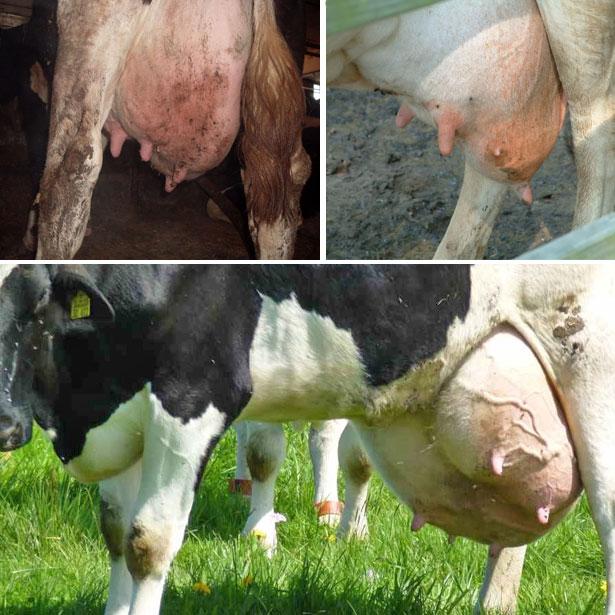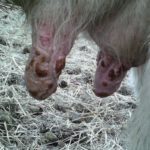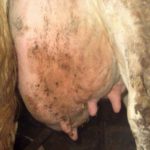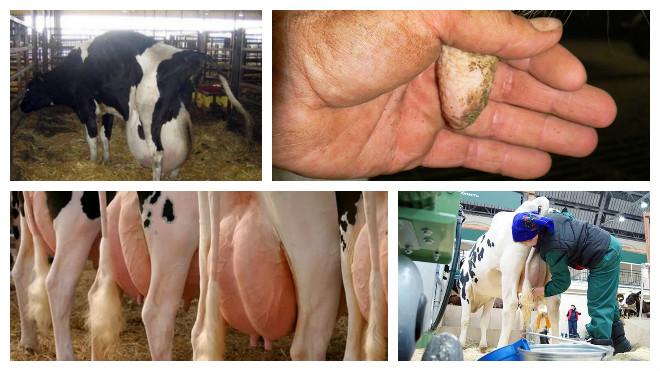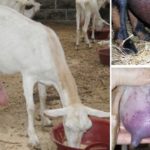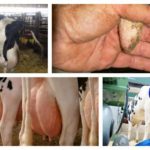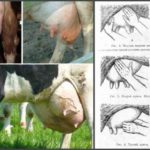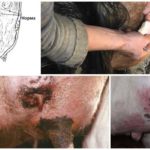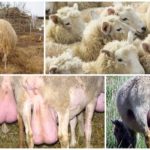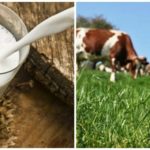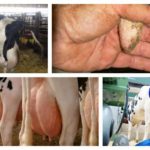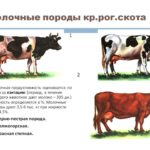Suppurative mastitis is one of the most difficult problems a livestock farmer can face. Adult cows often get it; the disease leads to a decrease in milk production, a decrease in its quality and complications. Let's consider the causes and symptoms of purulent mastitis in cows, diagnostic methods, drugs for treatment, methods of prevention. And also the consequences of the disease.
Causes of the problem
The purulent form of mastitis occurs as a consequence of subclinical, catarrhal, serous mastitis.Pus appears after bacteria penetrate into the udder when the nipples are injured, when milking technology is violated, when milk remains in the udder. Infection can occur at any time if the stall where the cow lives is dirty. The animal lies on a dirty, damp bedding, which allows bacteria to easily penetrate the udder. Cold and drafts also contribute to inflammation.
Infection can enter the udder canals not only from the outside, but also from the body - from diseased internal organs.
Symptoms and signs of the disease
With catarrhal mastitis, inflammation of the alveoli and ducts of the udder occurs. The disease is indicated by: thickening of the nipple, formation of dense nodules in the thickness of the udder, increased body temperature of the cow. Inflammation inside the udder is also indicated by a change in the appearance and structure of the milk; it becomes watery, flakes and clots appear in it. Blockage of the nipple passages with cheesy formations may occur.
In acute cases, usually 1 quarter is affected. Symptoms for acute and chronic mastitis are different. In the acute form, there is a sharp decrease in milk yield, the milk becomes bitter or salty from purulent contents, sometimes mixed with blood. The affected part of the udder swells, its size increases, and the animal feels pain when touched.
With chronic purulent mastitis, the symptoms become less pronounced, pain is not felt when touched, and the temperature returns to normal. The milk becomes yellowish and slimy.The inflammatory process leads to the fact that the alveoli in the udder are replaced by connective tissue, and the udder gradually loses its proper functionality.
Diagnosis of the disease
To make a diagnosis of purulent mastitis, it is necessary to examine the milk of a sick cow. It contains pus and pathogenic microorganisms. They are arranged in chains, and by their length one can determine the form of the disease: in acute cases they are short, in chronic cases they are long.
A change in the color of milk is also characteristic of purulent mastitis; in a sick animal it becomes yellowish from the admixture of pus. You can’t drink it, either fresh or processed.
How to treat purulent mastitis in cows
Treatment begins at the first signs of inflammation. Prescribe antibacterial drugs, anti-inflammatory drugs that remove swelling and reduce pain (“Mastinol”, “Nitox”, “Mastisan”). Disinfectants are injected from a syringe directly into the udder. The solutions should remain there for a maximum of 4 hours, then the liquid must be milked. The dosage and duration of treatment are determined by the veterinarian.
Superficial abscesses are opened, the pus is removed, and disinfected with iodine or ichthyol. Removing abscesses during mastitis helps cleanse the udder tissue, improve blood circulation in the organ, and restore its functions.
During treatment, the animal is placed in a separate stall, on a clean, dry bedding. Milk is milked every 6 hours, this prevents stagnation and compaction. After this, the milk is disposed of; under no circumstances should it be mixed with milk obtained from healthy cows. After milking is finished, the udder is massaged and lubricated with antibiotic ointment.
Possible consequences
Chronic, improperly treated or untreated purulent mastitis leads to the appearance of a malignant tumor in place of the fibrous tissue. More often, part of the udder tissue loses functionality, which affects milk production. The productivity of cows that have suffered from purulent mastitis is irrevocably reduced. Such individuals are culled in dairy farming.
The animal may even die if the acute form of the disease is not treated. In chronic conditions, bacteria from the udder constantly enter the bloodstream and spread throughout the body; they can infect other organs and poison the body with toxins.
Preventive actions
It is important that the barn is clean and dry. The litter needs to be changed as soon as it becomes dirty; the feeders and drinking bowls must be clean. The animal itself, its skin and udder need to be cleaned. Drafts must be prevented; animals should not lie on a cold floor.
In order not to miss the onset of purulent mastitis in cows, you need to monitor during milking for signs of the disease. Massage the udder before and after milking, wash it and wipe it with a cloth before starting work to prevent bacteria from getting into the teats. If fresh wounds, scratches, cracks, or abrasions are found, you should immediately treat the damage with antibacterial drugs.
During milking, you need to milk all the milk from the udder so that there is nothing left. Monitor the regularity of milking; you should not skip the procedure; overfilling of the udder with milk is a common cause of the development of purulent mastitis in farm animals.
Purulent mastitis in cows is a serious disease leading to a decrease in the productivity of dairy cattle. Any dairy cow can get sick.In the absence of treatment or incorrect, insufficient therapy, complications often arise, and the disease can result in the death of the animal. Mastitis can be prevented by following standard rules of animal care, cleanliness and milking rules.

